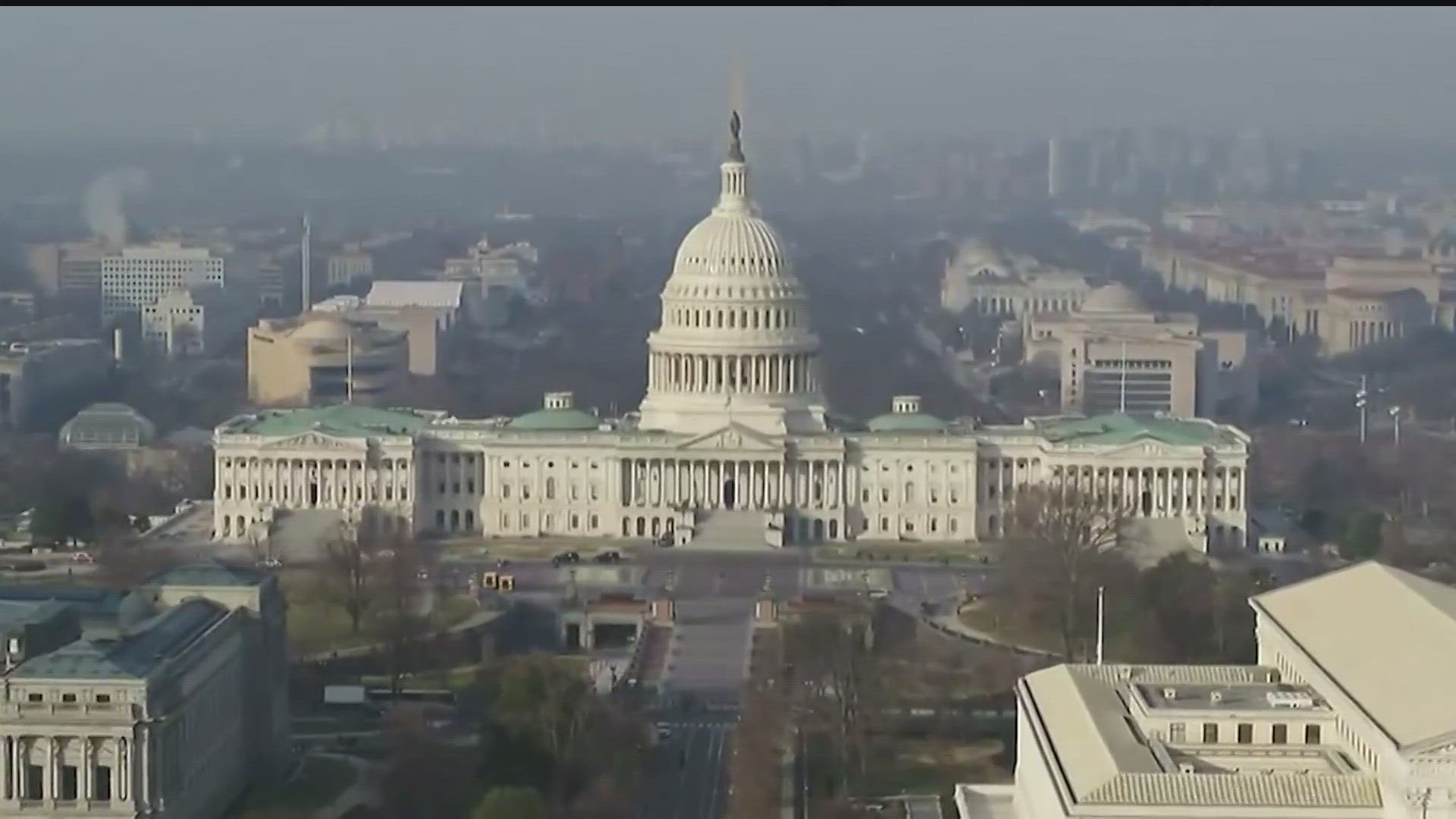As negotiations over the United States’ debt ceiling continue, President Biden said on May 17 that he’s confident the U.S. will avoid a default on its debt.
The Treasury Department says the U.S. could begin defaulting on its financial obligations as soon as June 1 if lawmakers do not suspend or raise the debt ceiling.
Biden and other lawmakers have claimed that such a default would be “unprecedented.” Scott also asked VERIFY if the U.S. has ever defaulted on its debt over failure to raise the debt ceiling.
THE QUESTION
Has the U.S. ever defaulted on its debt over failure to raise the debt ceiling?
THE SOURCES
- The Council of Economic Advisers (CEA), an agency in the Executive Office of the President
- The Congressional Research Service
- Bipartisan Policy Center
- Gary Richardson, Ph.D., professor of economics at the University of California Irvine
- Thomas Kahn, distinguished faculty fellow at American University’s Center for Congressional and Presidential Studies
THE ANSWER
No, the U.S. has never defaulted on its debt over failure to raise the debt ceiling.
There have been other moments in history when the U.S. missed debt payments, but they were unrelated to the debt ceiling.
WHAT WE FOUND
The U.S. hit its debt ceiling, or the amount that it’s able to borrow, in January 2023, but the government didn’t immediately default. That’s because the Treasury Department took “extraordinary measures” to keep paying the federal government’s bills, as it has done in the past. You can learn more about the national debt and debt ceiling here.
But those extraordinary measures and the federal government’s cash on hand will be exhausted at some point. That means Congress must suspend or raise the debt ceiling to avoid a default on the federal government’s debt.
The Council of Economic Advisers (CEA), an agency within the Executive Office of the President, said in a 2021 blog post that the U.S. “has never intentionally defaulted on its debt because of the debt limit.” Two experts who spoke with VERIFY agree.
The U.S. came within two days of a default over a debt ceiling standoff in 2011 during the first Obama administration, but ultimately avoided one, Thomas Kahn, a distinguished faculty fellow at American University and former staff director of the House Budget Committee, told VERIFY.
“Because we came that close, for the first time in our history, the creditworthiness of U.S. debt was downgraded,” Kahn said. “The interest rates went up, the stock market dropped and the cost to taxpayers was over $1 billion.”
If the U.S. were to default, the federal government may have to miss or delay payments such as those for Social Security and Medicare beneficiaries and government workers’ salaries. But it’s unclear who might not be paid due to a lack of historical precedent, according to Kahn and Gary Richardson, Ph.D., professor of economics at the University of California Irvine.
More from VERIFY: Claim Republican debt ceiling bill cuts veterans’ benefits needs context
“Hypothetically, if we were to default, it would put the government in an impossible Sophie’s choice because we would have to make choices between paying people who depend on Social Security, paying our men and women in uniform, or paying our bondholders,” Kahn said. “If we don't pay our bondholders, interest rates are going to skyrocket. Inflation is going to go up and unemployment is going to go up.”
Other instances of default are debated
Though the U.S. has never defaulted over failure to raise the debt ceiling, the government has not had an “unblemished payment record” throughout its history, the Congressional Research Service (CRS) explained in a report.
The CRS points to several instances of potential default that economic experts have cited in the past, though they are not related to a debt ceiling standoff.
In 1814, during the War of 1812, the federal government was unable to meet all of its financial obligations due to “military expenses and lagging revenue,” according to the CRS report. This included some interest payments on the federal debt.
The Bipartisan Policy Center also cites the War of 1812 as the last time the federal government experienced a “major default on its financial obligations.” The U.S. did not have a debt limit at that time.
More recently, in 1979, payments to some investors were delayed due mostly to technical glitches and organizational problems. Some have referred to this temporary delay in payments as a “mini-default,” the CRS report says.
According to the report, about 4,000 Treasury checks for interest payments and for the redemption of maturing securities held by investors worth an estimated $122 million were not sent on time. Though the delays inconvenienced investors, Reuters reported in 2011 that the problem was resolved within weeks.
Experts have also debated whether other moments in history, such as President Franklin Roosevelt’s actions to suspend the gold standard beginning in 1933, amounted to a default.
This is “controversial,” the CRS says, with its reporting noting that bondholders were repaid but on terms other than those specified in their contracts. The Supreme Court also upheld actions that suspended the gold standard.

